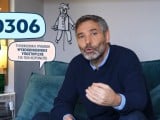We understand that some countries have recommended or are considering the use of both medical and non-medical masks in the general population to prevent the spread of COVID-19.
First and foremost, medical masks must be prioritized for health workers on the front lines of the response.
We know medical masks can help to protect health workers, but they’re in short supply globally.
We are concerned that the mass use of medical masks by the general population could exacerbate the shortage of these specialized masks for the people who need them most.
In some places, these shortages are putting health workers in real danger.
In health care facilities, WHO continues to recommend the use of medical masks, respirators and other personal protective equipment for health workers.
In the community, we recommend the use of medical masks by people who are sick and those who are caring for a sick person at home.
WHO has been evaluating the use of medical and non-medical masks for COVID-19 more widely.
Today, WHO is issuing guidance and criteria to support countries in making that decision.
For example, countries could consider using masks in communities where other measures such as cleaning hands and physical distancing are harder to achieve because of lack of water or cramped living conditions.
If masks are worn, they must be used safely and properly. WHO has guidance on how to put on, take off and dispose of masks.
What is clear is that there is limited research in this area.
We encourage countries that are considering the use of masks for the general population to study their effectiveness so we can all learn.
Most importantly, masks should only ever be used as part of a comprehensive package of interventions.
There is no black or white answer, and no silver bullet. Masks alone cannot stop the pandemic. Countries must continue to find, test, isolate and treat every case and trace every contact.
Mask or no mask, there are proven things all of us can do to protect ourselves and others – keep your distance, clean your hands, cough or sneeze into your elbow, and avoid touching your face.







